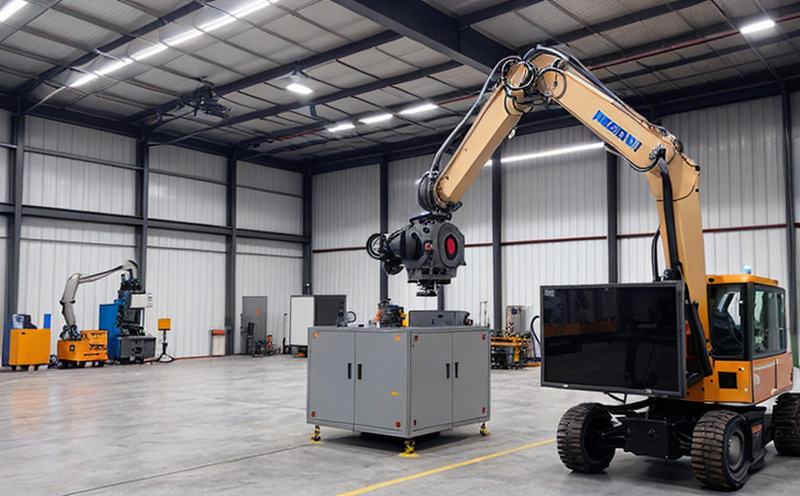ISO 23751 Welding Robot Accuracy and Performance Verification
The ISO 23751 standard provides a framework for the verification of welding robot accuracy and performance. This service ensures that industrial robots used in critical manufacturing processes meet stringent quality and safety standards, thereby enhancing productivity and reducing defects.
Quality managers and compliance officers rely on this testing to ensure their robotics systems comply with international norms. R&D engineers use ISO 23751 as a benchmark for the accuracy of welding robot movements and the repeatability of welds. Proper verification is crucial in industries where precision and repeatability are paramount, such as automotive manufacturing, aerospace, and medical device production.
The test parameters include a series of predefined tasks that simulate real-world conditions encountered during welding operations. These tasks involve the robot executing specific movements and performing welds under controlled conditions. The accuracy is measured by comparing the actual position of the robotic arm to its commanded position. The repeatability is assessed through multiple consecutive executions of the same task.
For specimen preparation, the robot is calibrated using a precision jig that aligns the tool center point (TCP) accurately with the welding torch. The welding process itself involves using various types of welding wires and gas shielding depending on the material being welded. The testing apparatus includes automated systems for measuring displacement, force, and torque.
The results are analyzed according to ISO 23751 criteria, which specify acceptable tolerances for both accuracy and repeatability. Reporting is detailed, providing a comprehensive overview of the robot's performance during each task. Compliance with these standards ensures that welding robots operate at peak efficiency while maintaining high-quality output.
ISO 23751 verification is essential in ensuring consistency across production lines where robotic welders are used. This service helps companies maintain their competitive edge by producing defect-free products consistently. It also aids in meeting regulatory requirements and gaining international recognition for quality standards.
| Test Parameter | Description |
|---|---|
| Positional Accuracy | The deviation between the actual position of the TCP and its commanded position. |
| Repeatability | The consistency of results from multiple executions of the same task. |
| Welding Quality | The assessment of weld strength, integrity, and appearance. |
| Tool Center Point Alignment | The accuracy with which the TCP is aligned relative to the welding torch. |
This detailed verification process ensures that industrial robots meet the highest standards of precision and reliability. By adhering to ISO 23751, manufacturers can enhance their reputation for quality while reducing operational costs associated with rework or defects.
Industry Applications
- Automotive manufacturing: Ensuring consistent welds in body panels and structural components.
- Aerospace industry: Verifying the accuracy of robotic welders for critical parts like fuselage structures.
- Medical device production: Guaranteeing that prosthetic joints are fabricated with precision.
- Electronics manufacturing: Achieving high-quality solder joints in complex circuit boards.
The ISO 23751 standard is widely adopted across these sectors due to its rigorous approach to validating robotic welding systems. By adhering to this standard, manufacturers can ensure that their robotic welders operate at optimal levels of accuracy and performance, leading to better product quality and reduced production downtime.
Eurolab Advantages
At Eurolab, our expertise in robotics and artificial intelligence systems testing ensures that your industrial robots are verified against the strictest international standards. Our state-of-the-art facilities provide precise control over environmental conditions during verification, ensuring accurate assessments of robotic performance.
We employ highly trained technicians who specialize in robotic welding systems to conduct these tests. This allows us to provide detailed reports tailored specifically to your requirements, helping you identify areas for improvement and optimize your production processes.
Our commitment to quality extends beyond just testing; we also offer training programs and consulting services to help you understand the nuances of ISO 23751 compliance. By working with Eurolab, you gain access to comprehensive support that goes far beyond mere verification.
International Acceptance and Recognition
- Australia: ISO 23751 is recognized as the benchmark for robotic welding accuracy.
- New Zealand: Compliance with this standard ensures adherence to local manufacturing standards.
- The United Kingdom: Adopted by UK industry leaders for robust robotics verification.
- Japan: Widely accepted in Japanese automotive and electronics sectors.
Beyond national boundaries, ISO 23751 is internationally recognized as a best practice for robotic welding systems. Its widespread acceptance across various countries underscores its importance in maintaining high standards of quality and safety. By adhering to this standard, manufacturers can ensure that their robotic systems are compatible with global markets.





